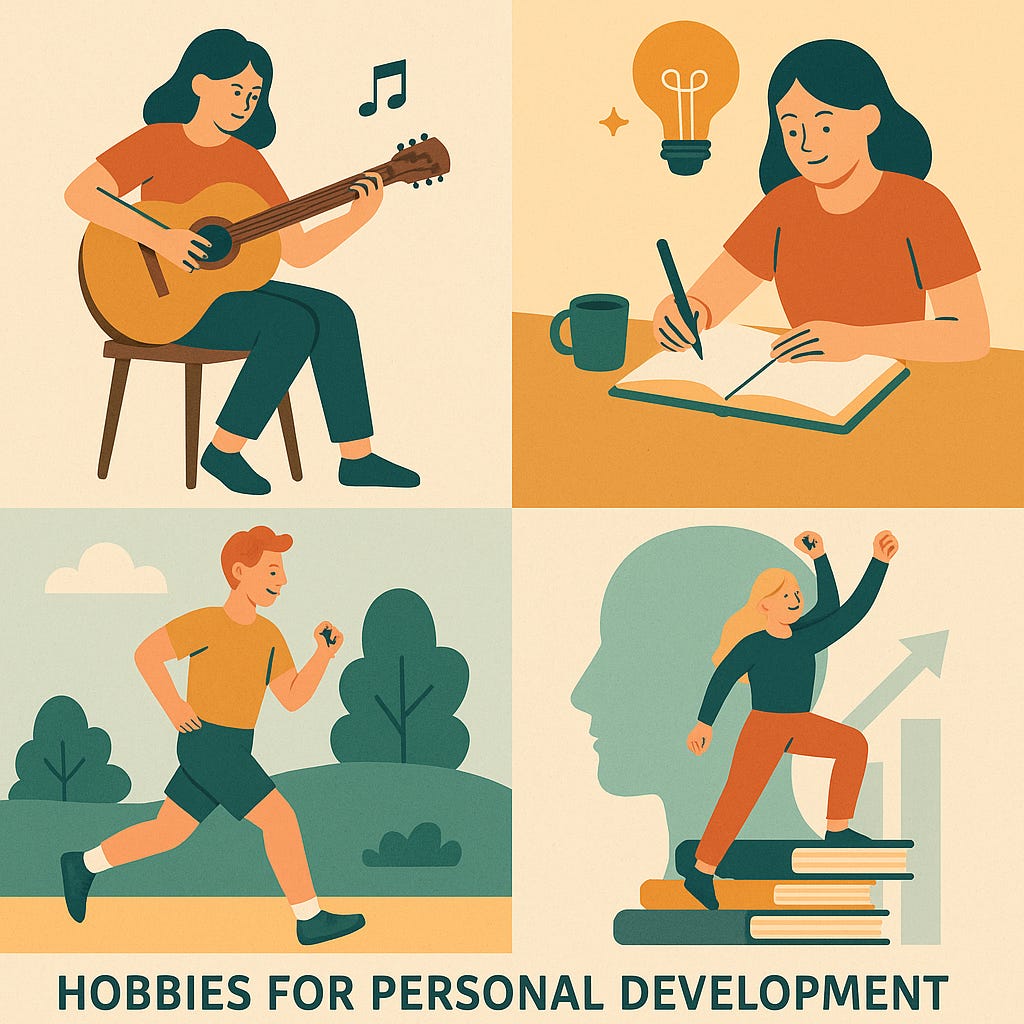Why Hobbies Are a Mental and Physical Health Tool
Who we are is fundamentally embodied
Today, we have a guest post by Jill Palmer from Mental Wellness Center.
Something’s off. You’re grinding through the day, but your attention is brittle, and every solution feels like another to-do list. What if the answer isn’t a fix, but a feeding? Not another productivity tool. Just something untracked. Something you do because you want to, not because it proves anything. That’s where a hobby enters, not as a luxury, but as a missing input. And once it’s back in place, everything else can breathe.
Your Brain Isn’t Lazy, It’s Undernourished
When your hands are busy but your mind is loose, something shifts. Doodling, crocheting, or reorganizing your bookshelf; none of these looks like therapy, yet they work on the same circuitry. Emotional processing happens when you’re not looking right at it. Studies have shown that even something as low-effort as messy sketching or repetitive crafting creates space for stress regulation and positive neuroplasticity. You don’t have to get better at it. You just have to do it.
The Body Follows What It Trusts
You don’t need to beat yourself up to build strength. Gardening. Playing catch with your kid. Walking loops around the block while listening to old albums. These aren’t workouts, but they move you in ways that count. Activities that feel “non-serious” often yield more consistent results. It turns out gentle movement done regularly has measurable effects on heart health and joint stability, without triggering shame or dread.
How to Start a Hobby That Doesn’t Stress You Out
Set your boundary: 15 minutes, once a week.
Pick something analog: bonus points if your phone stays in a drawer.
Give up on being good: no tutorials, no comparisons.
Track nothing: no metrics, no goals, no “did I improve?”
Repeat if it feels good. Don’t if it doesn’t. That’s it.
This is your off-grid zone. Let it stay that way. The moment it turns into a project, it stops being a refuge. Let the outcome be irrelevant. The joy is in starting — again and again — with no one watching.
Creative Hobbies: Making for the Sake of It
Creative hobbies cover a wide range of practices that let you shape ideas into something tangible. Visual options include drawing, painting, digital illustration, or photography. Tactile pursuits might involve knitting, crocheting, pottery, or woodworking. Auditory and performance-driven forms include songwriting, playing an instrument, or casual podcasting. Some people enjoy smaller lifestyle-creative outlets like journaling, scrapbooking, or DIY décor. If you’re looking to expand, you can explore drawing, embroidery, beading, digital crafting, or handmade décor as starting points that naturally lead to others.
Physical Hobbies: Movement Without Pressure
Physical hobbies don’t have to mean a gym membership. Gardening, hiking, casual biking, or dancing in your kitchen all qualify. Even lighter practices like stretching or yoga bring value when done regularly. Everyday movement hobbies such as walking or swimming can support health without turning into punishment. For some, pickup sports like tennis or basketball provide social connection alongside activity. The common thread is motion that feels like living, not labor.
Intellectual Hobbies: Stretching the Mind
Intellectual hobbies ask your brain to play. Classic examples include chess, crossword puzzles, and riddles. Structured learning paths, such foreign languages, coding basics, or book clubs, push curiosity further. Casual engagement with logic games and memory apps keeps thinking flexible without pressure to excel. For others, trivia nights or debate groups provide both challenge and social reward. Each one sharpens awareness by giving thought a new direction.
Lifestyle Hobbies: Rhythm and Ritual
Lifestyle hobbies often look simple: curating playlists, layering scents, caring for houseplants. These routines soften the sharp edges of a week. Early in the day, practices like journaling or light meal prep can anchor time. Even simple lifestyle rituals, such as home-organization projects or weekend baking, become steady markers. None of them requires mastery. They work because repetition creates its own kind of comfort.
If the Hobby Grows Legs, Let It
One day, someone asks for one of your paintings. Or wants to buy that ceramic mug. Or asks how you made that sourdough crust. You don’t have to turn it into a job, but you could. People are learning how to turn passion into income without losing their joy. The trick is not starting with monetization. It’s starting with presence, and letting the rest follow.
Nothing has to come of it. It doesn’t have to change your career. Or heal your trauma. Or become a brand. But it might. Or maybe it just makes your week feel a little more yours. That’s enough. That’s more than enough. You don’t need a reason to do the thing that steadies you. Not everything you love must justify its existence. Some things just get to matter.
Mental Health through an Integrated Lens
Humanity’s Values is a free and 100% reader-supported publication. To help support the continued delivery of content you enjoy and build the community, please become a subscriber.



